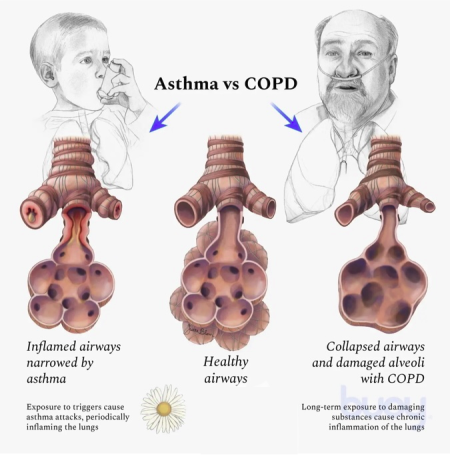MN Permit Process is Extremely Flawed!
Part II of a III Part Series
By H. LYNN ADELSMAN and ROB HENDRICKSON
In the Phillips Community, the Smith Foundry and Bituminous Roadways are known for being next to one of the more odorous sections of the Midtown Greenway; but, Abbott Northwestern Hospital, vehicular traffic, and other facilities also contribute to the risk of air pollutant exposure in the four Phillips neighborhoods- East Phillips, Midtown Phillips, Phillips West, and Ventura Village-Hiawatha Ave to 35-W, Lake Street to I-94. In this article we will break these sources down and begin to question how they cumulatively impact the lives and well being of nearby residents and residents of adjacent neighborhoods.
The United States Congress enacted the Clean Air Act in 1970 to finally address the usually unseen menace known as air pollution. The Minnesota Pollution Control Agency (MPCA) uses the Clean Air Act when issuing air permits, and they have historically tracked these pollutants through self-reported annual air emission inventories from industrial facilities (with the most recently published inventory being 2021). We will have to rely on these self-reports for now, but new legislation like the Frontline Communities Protection Act (HF637) and community air monitoring efforts are looking to change this.

Smith Foundry, 1855 East 28th Street
In 1992, the MPCA-Minnesota Pollution Control Agency issued Smith Foundry its last updated air permit. The permit was effective for five years, but a state “permit shield” has allowed the foundry to legally operate since then. This shield says if the company “submits a timely and complete application for reissuance,” the “permit shall be considered not to expire until a new permit is issued.”
Adding up numbers from their past 10 reports, the Smith Foundry has emitted the most Particulate Matter 2.5 (PM2.5) out of all facilities within 1 kilometer of the City of Minneapolis. In recent years Smith has reported slightly less PM2.5 (ranked 3rd as of 2021), but has consistently been the largest emitter of lead in Hennepin County. New permitting for Smith is long overdue for both the health of Smith’s employees [see “Raise Your Voice” by Peter Molenaar from this current issue] and residents of East Phillips.
Bituminous Roadways, 2828 Longfellow Avenue; Abbott Northwestern Hospital, 800 East 28th Street; & Traffic
In 1996, the MPCA issued Bituminous Roadways a non-expiring “Air Emission Registration Permit,” used for businesses with “low levels of actual emissions.” Though they may be considered low emission at a MN State level, the business emitted the 9th most Carbon Monoxide (CO) within 1 kilometer of Minneapolis in 2021. Abbott Northwestern Hospital was next in line at 10th.
CO makes it more difficult to absorb oxygen and is one of the many precursors to ground-level ozone, another being nitrogen oxides (NOx) which are typically made through power and heat generation. Abbott Northwestern was the 8th largest emitter of NOx in Minneapolis in 2021 and is currently updating their air permit for expansion with new boilers and generators (sources of NOx).
Arguably the largest source of emissions in Phillips is Traffic-Related Air Pollution (TRAP), which includes both CO and PM. In Abbott Northwestern’s most recent air permit application, the MPCA assumed traffic impacts do not extend significantly beyond 300 meters (the hospital is about 600 meters from 35W and 1100 meters from I-94). They do, however, state that this is one of the most heavily trafficked areas in the state.
With all these air pollutants mixing with each other, the resulting ozone levels and hazards are tough to quantify. Nevertheless, they accumulate into health impacts on the people of Phillips Community.
Exposed as we are to particulate matter, lead, ozone, and other airborne pollutants, be aware they can be disease causing. As discussed in part one of this series, children are especially susceptible given their smaller bodies. There are many outdoor spaces where kids play nearby these facilities including Little Earth of United Tribes (Housing Community), daycares, playgrounds, parks and schools. Seniors are also at greater risk as prior exposures accumulate to stroke and worsened heart and lung health.
What does a solution look like?
Is it more monitoring and poor air quality text alerts for youth workers? Maybe community members regularly reporting smells to move the MPCA to action? Perhaps it’s changing I-94 into a boulevard and giving hourly emission limits to industrial facilities instead of annual limits! We’ll discuss these ideas and more in Part III of this III Part Series.
For sources, data, and more information see: https://linktr.ee/minneapolis_airquality
See Part I of this III Part Series at alleynews.org/archives, July 2023 Page 1– “Proof: Pollutants Harm Health” or click this link: https://alleynews.org/2023/07/after-decades-of-poor-air-in-phillips-proof-pollutants-harm-health/









